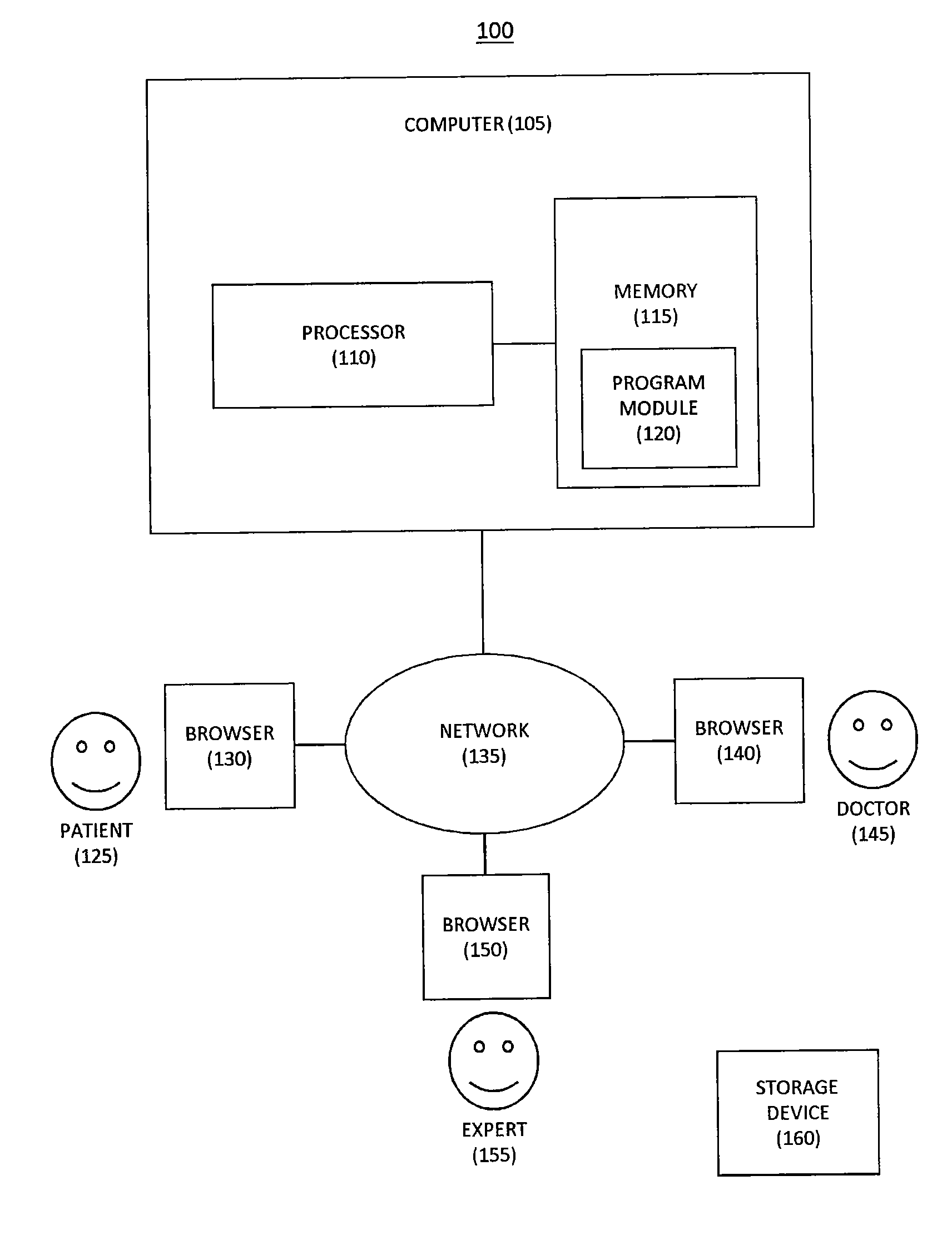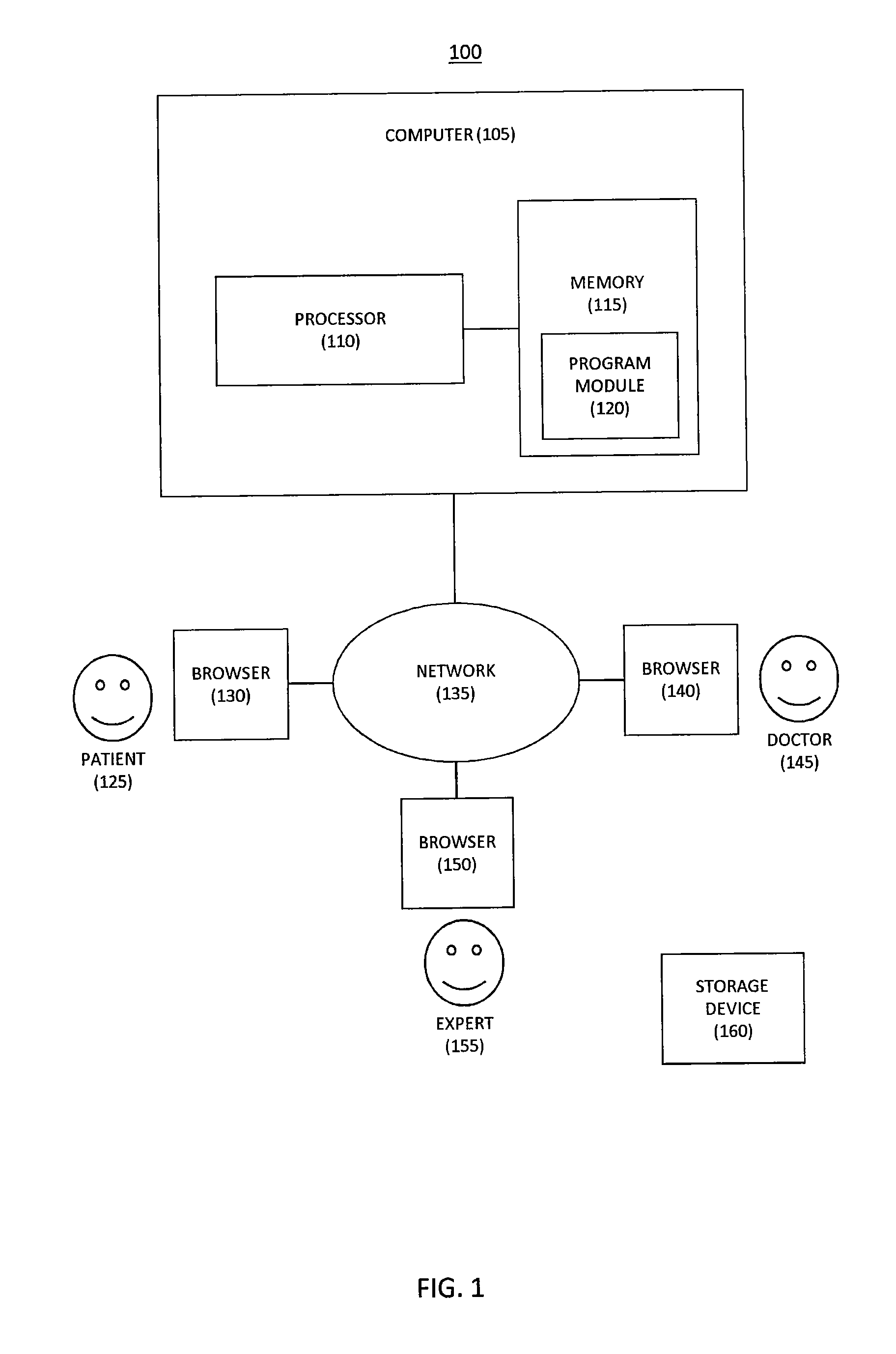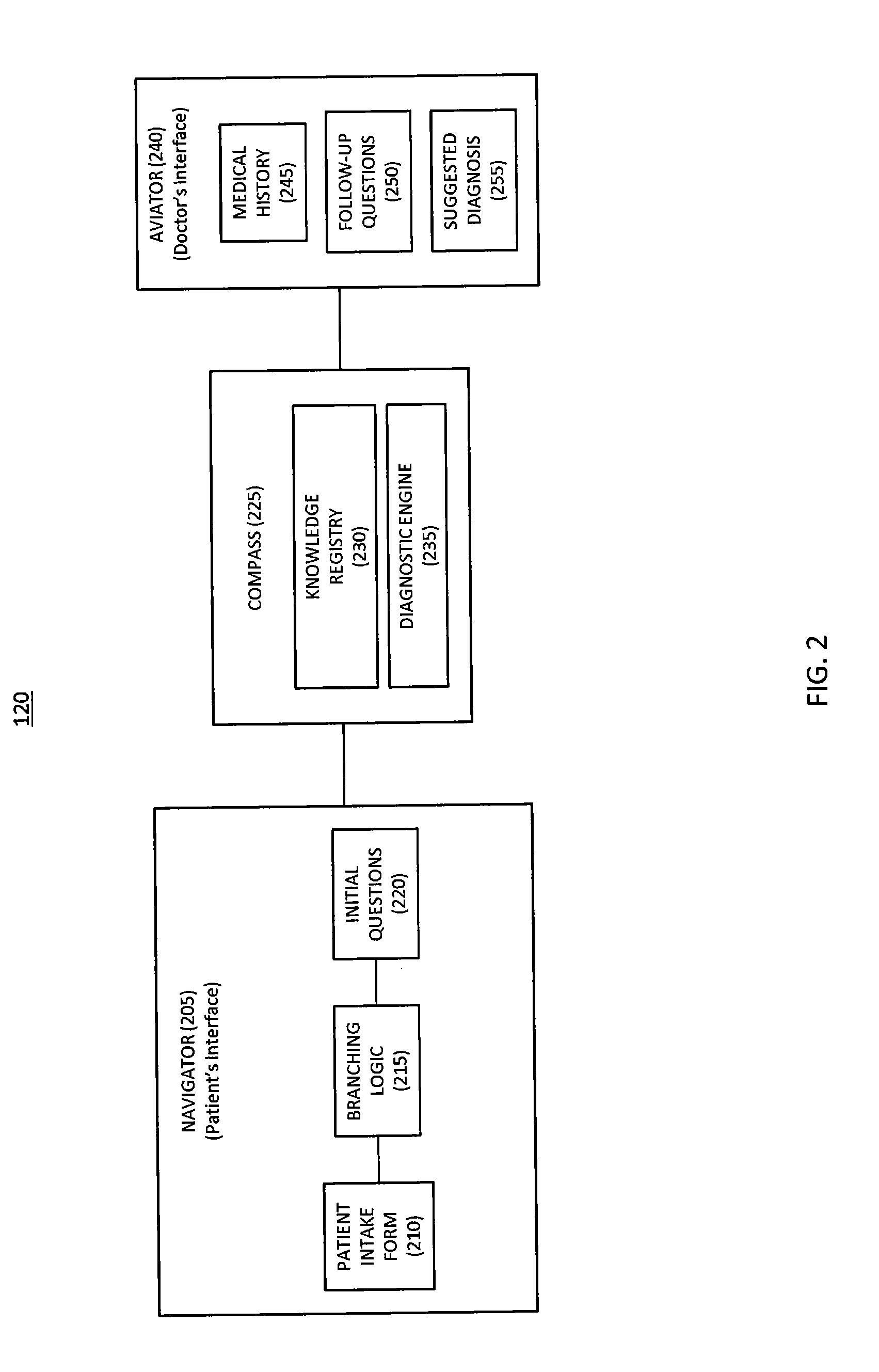System and method for matching person-specific data with evidence resulting in recommended actions
a person-specific data and evidence technology, applied in the field of person-specific diagnostic analysis and personalized management of individuals, can solve the problems of lack of requisite medical knowledge to adequately complete questions, lack of tools for health care providers, systems and patients to effectively collect patient data, and lack of requisite levels of medical knowledge for completing questions
- Summary
- Abstract
- Description
- Claims
- Application Information
AI Technical Summary
Benefits of technology
Problems solved by technology
Method used
Image
Examples
example 1
Iteration 3
[0117]Assume that when presented with questions Q3 and Q2, patient 125 does not answer Q3. That is, patient 125 is not gaining weight. However, patient 125 (or doctor 145) answers question Q2 in the affirmative, thus indicating that patient 125 is experiencing fatigue.
[0118]For condition ranking:
Score (Condition A)=(0.90+0.92+0.80+0.70)×(4 / 4)=3.32
Score (Condition B)=(0.75+0.90)×(2 / 3)=1.1 (Threshold event)
Score (Condition C)=(0.50+0.80×(2 / 2)=1.3 (Threshold event)
[0119]Condition A has a score that is still substantially greater than that of its nearest rival, although it has dropped from the score in the previous iteration. Each of conditions A and C have passed a threshold event in that all their questions are answered. Diagnostic engine 235 sends this condition ranking and notice of the threshold event to Aviator 240 as suggested diagnosis 255, and Aviator 240 presents it to doctor 145 on browser 140.
[0120]For question ranking:[0121]GS1=Condition B {Q3}
[0122]Thus, the r...
example 2
Iteration 2
[0137]Assume that when presented with questions Q5, Q2 and Q4, patient 125 does not answer question Q5. That is, patient 125 does not have a low peak expiratory flow. However, patient 125 (or doctor 145) answers question Q2 in the affirmative, thus indicating that patient 125 is experiencing fatigue.
[0138]For condition ranking:
Score (Condition A)=(0.90+0.70)×(2 / 4)=0.80
Score (Condition B)=(0.75+0.80+0.90)×(3 / 3)=2.45 (Threshold event)
Score (Condition C)=(0.50+0.80)×(2 / 2)=1.3 (Threshold event)
[0139]Accordingly, the conditions are ranked in order B, C, A, and condition B is emerging as a dominant candidate. Additionally, each of conditions B and C has passed a threshold event in that all its questions have been answered. Diagnostic engine 235 sends this condition ranking and notice of the threshold events to Aviator 240 as suggested diagnosis 255, and Aviator 240 presents it to doctor 145 on browser 140.
[0140]For question ranking:[0141]GS1=Condition A {Q5, Q4}
[0142]The resu...
example 3
Diagnosis of Condition C (Over Exertion)
Example 3
Iteration 1
[0148]Assume that when presented with questions Q3, Q5, Q2 and Q4, patient 125 does not answer either of questions Q3 or Q5. That is, patient 125 is not gaining weight and does not have a low peak expiratory flow. However, patient 125 (or doctor 145) answers question Q2 in the affirmative, thus indicating that patient 125 is experiencing fatigue.
[0149]For condition ranking:
Score (Condition A)=(0.90+0.70)×(2 / 4)=0.80
Score (Condition B)=(0.75+0.90)×(2 / 3)=1.1
Score (Condition C)=(0.50+0.80)×(2 / 2)=1.3 (Threshold event)
[0150]Accordingly, the conditions are ranked in order C, B, A, and condition C is emerging as a leading candidate. The scores for conditions B and C are relatively close to one another, but this represents a lack of discriminatory data as all of the questions for condition C are a subset of both conditions A and B. However, condition C has passed a threshold event as all its questions are answered. Diagnostic engin...
PUM
 Login to View More
Login to View More Abstract
Description
Claims
Application Information
 Login to View More
Login to View More - R&D
- Intellectual Property
- Life Sciences
- Materials
- Tech Scout
- Unparalleled Data Quality
- Higher Quality Content
- 60% Fewer Hallucinations
Browse by: Latest US Patents, China's latest patents, Technical Efficacy Thesaurus, Application Domain, Technology Topic, Popular Technical Reports.
© 2025 PatSnap. All rights reserved.Legal|Privacy policy|Modern Slavery Act Transparency Statement|Sitemap|About US| Contact US: help@patsnap.com



